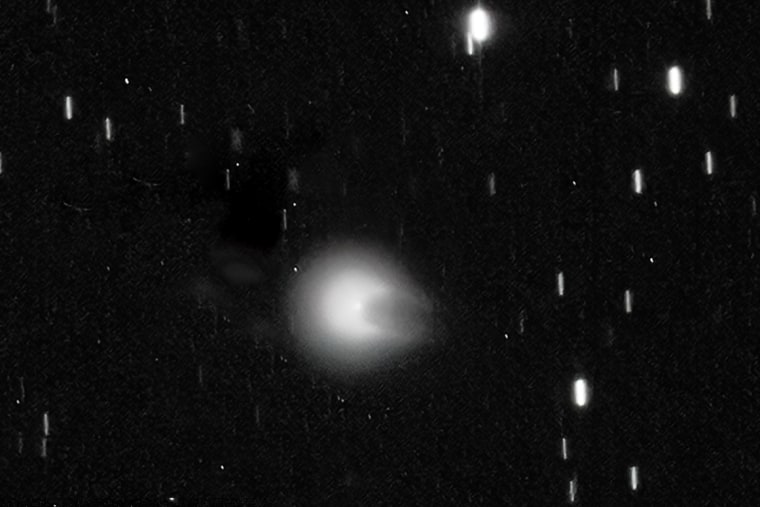Comet chasers: Give the devil his due.
A comet with two distinct “horns” of gas and ice, earning it the nickname “devil comet” is speeding through the inner solar system and may be visible to the naked eye in the spring when it reaches its closest point to Earth.
The celestial object, formally known as Comet 12/P Pons-Brooks, does not pose a threat to the planet. Instead, the cosmic interloper provides an opportunity for skywatchers to try to spot the comet as it nears Earth on its 71-year orbit around the sun.
Comet 12/P Pons-Brooks will reach perihelion, or the point in its orbit closest to the sun, on April 21, 2024. Shortly after that, on June 2, the comet will pass closest to Earth. During that time, if conditions are clear and skies are dark enough, astronomers have said that the comet may be bright enough to see with the naked eye.
In the meantime, Comet 12/P Pons-Brooks has been putting on a show for those with powerful telescopes.
Astronomers have observed the comet erupt twice in the past four months — once in July and again earlier this month.
During both outbursts, the comet brightened significantly and spewed clouds of gas and icy debris that looked like two matching horns. Others likened the comet’s unique post-eruption appearance to the Millennium Falcon starship from the “Star Wars” franchise.
Eliot Herman, an amateur astronomer and retired professor in the University of Arizona's School of Plant Sciences, captured stunning images of the Comet 12/P Pons-Brooks and its devil horns using two remote telescopes in Utah.
The comet has a core of dust, gas and ice surrounded by a bright cloud of gas known as a coma. Sunlight and solar radiation can heat the comet’s core, sometimes causing violent outbursts like the ones observed in July and Oct.
Herman said the comet’s temporary horns are thought to originate from these icy eruptions. The comet’s structure may be shaping how the spewed clouds of gas and ice appear from Earth, creating the appearance of horns to ground-based telescopes.
But precisely what is happening is not well understood, according to Herman.
“By observing this more intensely we might resolve this question, and there is a community of observers who are studying this,” he told NBC News in an email.

Comet 12/P Pons-Brooks was discovered in 1812 by a French astronomer, Jean-Louis Pons. The object was observed again in 1883 by astronomer William Brooks. After its close approach in the spring, the comet will not return to the inner solar system again for another 71 years.
Astronomers are keen to study Comet 12/P Pons-Brooks as it passes near Earth, and before it swings around the sun and hurtles back into the outer solar system.
The timing of its approach coincides with a total solar eclipse on April 8, 2024. At that time, Herman said Comet 12/P Pons-Brooks will be close to the sun and possibly bright enough to see with the naked eye.
“The NASA SOHO space probe captures images from space of comets close to the sun, many per year, but seeing one with the eye close to the sun is impossible unless there is an eclipse, and there will be,” he said. “I will be in Texas and hope to see it and photograph it.”
